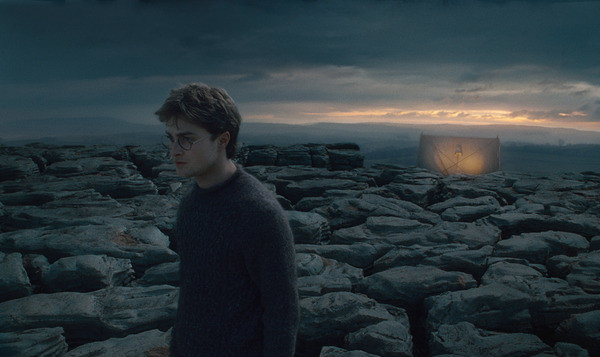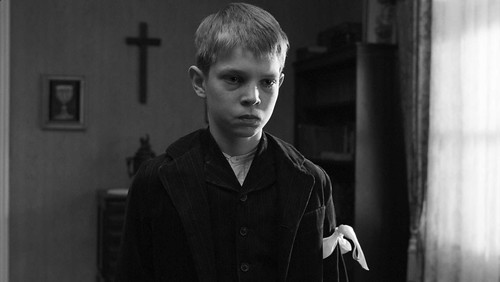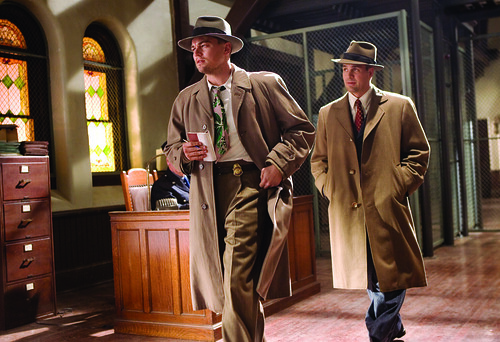
Though Harry Potter and the Deathly Hallows: Part One is a blockbuster about teenage wizards, the seventh in the Harry Potter series is more ambiguous and thematically relevant than many movies about adults. The plot will baffle those who have either not seen the previous film or read J. K. Rowling's bestselling books.
The wicked Voldemort (Ralph Fiennes) gathers his band of Death Eaters to create a world where muggles (non-magical humans) are subservient to wizards. Voldemort himself echoes Hitler's makeup in that he is half-muggle, and pamphlets strewn throughout the film (including one titled "when muggles attack") resemble Nazi propaganda.
Meanwhile, Harry Potter (Daniel Radcliffe), Hermione Granger (Emma Watson), and Ron Weasley (Rupert Grint) abandon their final year at the magical school of Hogwarts to embark on a quest to destroy Voldemort. To do this, they must find six horcruxes, objects containing pieces of Voldemort's soul.

Deathly Hallows: Part One, the second to last film, is more appropriate for teenagers than young children. From the barren scenery to the shuddering, downcast portrait of Harry on a wanted poster, a sense of despair pervades the atmosphere. As our three young heroes struggle with uncertainty, their friendship is put to the test.
Seasoned British thespians including Bill Nighy and Helena Bonham Carter have little more than cameos, but most minor characters are well handled. Memorable roles include Alan Rickman's icy Snape, David Thewlis's kind werewolf Lupin (in human form), and Imelda Staunton's creepy interrogator Dolores Umbridge.
Voldemort's hosts, Death Eaters Draco (Tom Felton) and Lucius Malfoy (Jason Isaacs), exemplify the crumbling upper class. Humiliated by Voldemort and lower-class thugs, the snobbish Malfoys discover how overturning the social order can negatively affect them.

The odious but helpful house-elf Kreachure, a CGI creation, is marvelously voiced by Simon McBurney. The more heroic house-elf Dobby (Toby Jones) is less successful. He comes across as more cartoonish than inspiring.
But the heart of this film is the trio. Due to the amount of material crammed into each movie, Hermione and Ron have often felt more like sidekicks than complete characters. Here their acting, especially Ms. Watson's, has improved and their conflicts are fleshed out.
We see Hermione's sacrifice as she erases her muggle family's memories in order to protect them. One of the youngest and least powerful in a large family of strong wizards, Ron and his insecurities also emerge, as does his resentment about the relationship between the famous Harry and overachieving Hermione.

Ron and Hermione's unspoken romance is humorous, frustrating, and sweet. While Hermione notes that she is "always mad" at Ron, she and Harry have a more harmonious and platonic connection. Their closeness is demonstrated in the film's most moving scene, when Harry dances with Hermione. Though not in the book, this moment of joy is a counterpoint to the darkness that takes up so much of the film, and the dance dissolves when they recall the complexity of their situation.
The most creative part of the film, arguably of the entire series, is a curious but fascinating animation of The Tale of the Three Brothers. Nicely read by Ms. Watson, the story of Death's encounter with three brothers is grim, eerie, and hauntingly beautiful.
The film is by no means perfect. It has its share of melodrama, and Alexandre Deslpat's usually lovely score can be laughably over-the-top. Long pauses prolong an already lengthy movie. Part One's abrupt ending isn't particularly satisfying; the audience will have to wait until Part Two for a real conclusion.

Still, it is touching to see the tired and worn triumvirate walk past charred trailer homes as they listen to death tolls on the radio. Hardly older than children, they have to learn that heroism is more tedious than glorious. With only one more film to go, Harry Potter and the Deathly Hallows: Part One manages to be the most emotionally resonant Harry Potter movie yet.



























